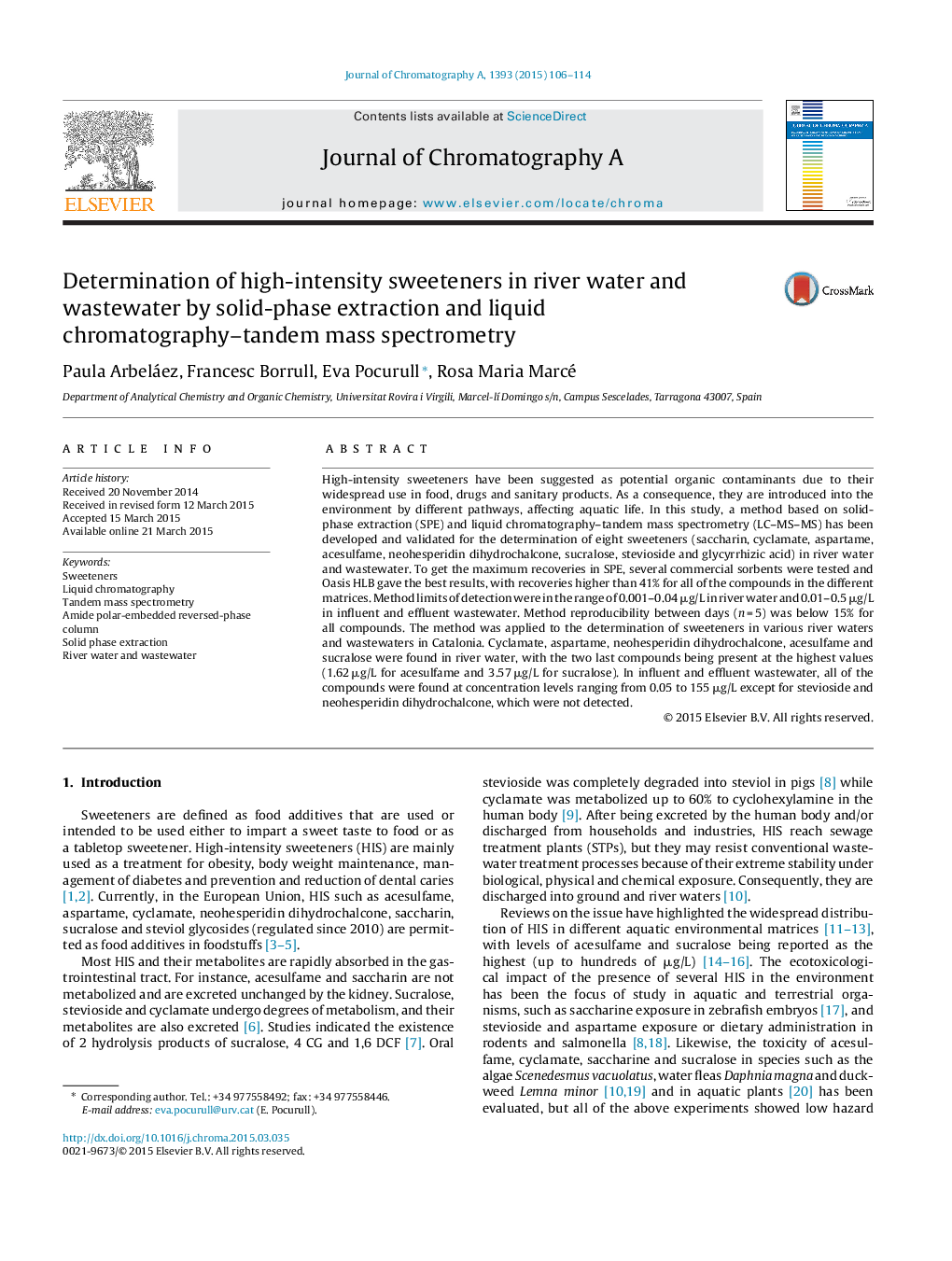| Article ID | Journal | Published Year | Pages | File Type |
|---|---|---|---|---|
| 1199454 | Journal of Chromatography A | 2015 | 9 Pages |
•SPE/LC–MS/MS method to determine HIS in environmental water samples at low ng/L.•Stevioside and glycyrrhizic acid have been studied in environmental water for the first time.•Chromatographic resolution was evaluated in 5 reversed-phase columns and HILIC.•A polar-embedded reversed-phase column showed the best chromatographic separation.•Several clean-up strategies to reduce the matrix effect were studied.
High-intensity sweeteners have been suggested as potential organic contaminants due to their widespread use in food, drugs and sanitary products. As a consequence, they are introduced into the environment by different pathways, affecting aquatic life. In this study, a method based on solid-phase extraction (SPE) and liquid chromatography–tandem mass spectrometry (LC–MS–MS) has been developed and validated for the determination of eight sweeteners (saccharin, cyclamate, aspartame, acesulfame, neohesperidin dihydrochalcone, sucralose, stevioside and glycyrrhizic acid) in river water and wastewater. To get the maximum recoveries in SPE, several commercial sorbents were tested and Oasis HLB gave the best results, with recoveries higher than 41% for all of the compounds in the different matrices. Method limits of detection were in the range of 0.001–0.04 μg/L in river water and 0.01–0.5 μg/L in influent and effluent wastewater. Method reproducibility between days (n = 5) was below 15% for all compounds. The method was applied to the determination of sweeteners in various river waters and wastewaters in Catalonia. Cyclamate, aspartame, neohesperidin dihydrochalcone, acesulfame and sucralose were found in river water, with the two last compounds being present at the highest values (1.62 μg/L for acesulfame and 3.57 μg/L for sucralose). In influent and effluent wastewater, all of the compounds were found at concentration levels ranging from 0.05 to 155 μg/L except for stevioside and neohesperidin dihydrochalcone, which were not detected.
